This feature on Mike Harnden originally appeared in Volume 1 Issue 2 of Inside MotoX & Off Road when it was known as IMX.
Many great riders have left their mark in Canadian motocross but there are a few out there who have had their accomplishments overshadowed. One of those unsung heroes is a present day CR500 rider who now lives in Ottawa. He’s 43 years old and still has the edge on many of the riders in the Pro class. His story is incredible – a Canadian Success Story untold for over 25 years.
The Beginning
The son of a General Motors employee, Mike grew up in the blue collar GM town of Oshawa, ON and began racing motocross late at the age of 15. “I delivered papers to buy my bikes and pay entry fees,” says Harnden. At his first race he qualified third in the 125 Junior class against 135 competitors and finished seventh in the main event despite a crash in the first corner. “I won a trophy and five dollars at my first race,” he exclaims. “I was hooked.” Failing to earn enough points to be moved up to the Intermediate class (called Senior at the time), Mike wrote a letter to the CMA requesting to be moved up a class. His wish was granted and Harnden had several top finishes in the Intermediate division racing a used Suzuki RM370. He was determined to request another move up to Expert after only his second year of racing. “My Dad thought I was crazy,” Harnden remembers. “He said, ‘You’re not moving up to Expert, you haven’t even won a race yet!’”
Racing a second year in the Intermediate class turned out to be beneficial. Mike saved up enough money to buy his first new bike for the 1978 series – a shiny new Honda CR250. Now full of confidence, Harnden started to win immediately. “I was winning everything and earning lots of Honda contingency money,” he recalls. “Racing was actually paying for itself.” His breakthrough race came at the end of the 1978 season. “I entered the Copetown National [Pro class] as an Intermediate and finished eighth in the second moto,” he says. “I was the only guy in the top 15 with yellow plates so I guess I turned some heads.” Shortly after that event Mike received a call from Can-Am, who offered him a factory ride for the 1979 series – his rookie year. Meanwhile, at the other end of the country, a young racer by the name of Ross Pederson was also turning Pro and would be riding for the same team. A rivalry was born.
Mike and Ross both started the 1979 series with a bang. But it was Ross who began winning motos in his rookie season. “In the final two rounds of the 1979 Canadian Nationals I finished fifth and third overall but Ross was a threat to win at every round,” Harnden points out. In 1980, his second year as a professional, Mike set his sights on a top five National number. Crashes and mechanical DNFs at the Western rounds dropped him to eighth overall that year but nonetheless he had gained confidence was ready to win some Nationals. Bill McLean from Yamaha Canada saw his potential and approached him with a full factory ride at the banquet after the last National.
The Racer’s Racer
At 20 years of age, full of determination and willpower, Mike decided to train in Southern California to prepare for the 1981 season. With a new YZ250 and YZ465 in the back of his van and only his tenacity to keep him company, he embarked on the 2,500-mile trip. Mike stayed abroad until mid-April and competed in the early AMA Supercross rounds and AMA Nationals. “I slept in my van for quite a while but I met up with Jim Holley and he let me sleep in a bunk-house beside his garage,” Harnden says. “It kind of looked like a potting shed.” Upon his return, Mike’s Canadian results skyrocketed immediately. He swept the Ontario Provincials in both the 250 and 500 class and then focused on the 250s for the National series.
“I won my first National that year in Ulverton and finished second overall in the 250 class,” he says. “That was my first really good consistent year. I was ninth and eighth in the two prior years and now I was second.” Mike was also becoming an excellent Supercross rider and he finished the year as the second Canadian in the series.
In 1982 Harnden re-signed with Yamaha and won his first 500cc National in Thunder Bay, ON. He also continued to venture south of the border to compete in key AMA events. “I had a really fast 250 that year,” he says. “I holeshot my qualifier at the Pontiac Silverdome against all of the big U.S. guys.” He went on to finish fifth at the Toronto Supercross behind Mark Barnett, Johnny O’Mara and his Canadian nemesis Pederson. A string of successful races combined with his strong Supercross skills resulted in a bidding war between Yamaha and Honda for the 1983 season. “Yamaha couldn’t match Honda’s offer and they had a great program so I went with Honda,” Harnden explains.
Prior to the 1983 season Mike traveled to Europe during the off-season rather than Florida or California. “I raced in Europe for three months and felt that my preseason preparation was far superior to prior years,” he recalls. “I had a fantastic Ontario season and was really starting to feel at home on the 500.” Mike went on to finish second overall in the 500 class that year behind Ross and had now placed second in a National or Supercross series in each of the past three years. By 1984 Mike was tired of playing second fiddle to Pederson. “I was Honda’s top guy – they were giving me lots of backing and I was determined to try anything to steal a Championship from Ross,” he remembers. “He had won 16 Canadian titles by then and everyone was gunning for him. I sent my entire bike to Europe for the preseason and was totally focused on the 500 class. At the St. Anthonis International race in Holland I placed fourth in timed practice against a whole host of GP factory riders. I also placed seventh in a moto at Mt. Morris, PA that year and finished ninth overall.”
It wasn’t all smooth sailing during the 1984 pre-season though. Mike seemed to have an incredible propensity for attracting the bizarre. While driving by himself from Holland to France in a rented van, Mike started to smell something strange. “All of the sudden the dog house [engine housing] started melting as I was driving down the highway. It actually started sagging and was hot to the touch.” Mike immediately pulled over to investigate. “I ran to the front and saw flames coming out through the grill.” Concerned about a major explosion Mike quickly unloaded his bike and gas can and then ran back to try to douse the fire with his water jug. “I couldn’t even make a dent in the fire and by this time I couldn’t get my gear and belongings out either because the entire cab was in flames.”
Then the bizarre happened. “The ignition must have melted and the van started on its own. I had left it in gear earlier so the van took off and started racing down the highway. I was standing in the wheel well steering the van and tried to reach in and put my foot on the brake but my shoe caught fire.” At that time Mike was forced to jump from the van and watch it veer off the road and end up in a ditch engulfed in flames. “The van took off with the cargo doors wagging in the wind and my loading ramp still dragging on the ground. It rammed into the ditch and was stuck in the endo position with its rear wheels off the ground and the motor was wide open. It was ugly.”
Mike’s problems were not over as he now had no money, no passport, no clothes or riding gear and had to use hand gestures and broken Dutch to convince the tow truck driver to lend him enough money to take a train back to his friend Gert Jan Van Doorn’s house in Holland.
Mishaps aside, Mike’s preseason racing and training went extremely well and for the 1984 season he had one more notch in his armour. For the first time in his career Mike now had a mechanic to travel to the races with him.
“I had been pestering Honda for a long time to give me the budget for a mechanic and they finally did it that year,” Harnden says. “Until that time I was kneeling in the dirt between motos changing tires and clutch plates. Racers didn’t even have pop-up canopies back then so if it was a mud race, you worked on your bike in the rain.” Armed with two CR500s, a CR250 and now a mechanic, Mike headed West to Kelowna, BC for the first 500 National. “I went 3-3 for second overall at the first round,” he says. “I was pretty happy with it because I had not done well at the western rounds in the past.” Pederson encountered some bad luck of his own, throwing a chain at round 2. Mike capitalized and won the next two rounds in Alberta and Manitoba with consistent finishes. He came into round 4, the final event, with a 16-point lead and it appeared certain that he would finally beat Ross and attain his goal of being Canadian National Champion.
It was the summer of 1984 and early that morning the Honda pits were full of excitement and confidence. Team Honda was poised to clinch the biggest upset in Canadian Motocross since 1980. Harnden had arrived that morning in Copetown with a 16-point lead over defending 500cc champion Ross Pederson. Mike had won the previous two rounds and needed only 4-5 moto scores to clinch the title. Team Honda boss Hank Howard had already shown Mike the #1 t-shirts he had printed during the week. “I figured I would take it easy, let Pederson win the race and go 2-2 or 3-3 to clinch the title,” quips Harnden while relaxing in a lawn chair at his home in Ottawa.
Unfortunately, the first moto had turned out to be a disaster. Normally full of confidence, Mike was nervous. He tensed up and fought with his bike. He started poorly and couldn’t make time on his competitors. The track was fast and smooth, making it difficult to pass. “There were eight or 10 guys all going the same pace and I didn’t find that at the other rounds,” Mike recalls. “I couldn’t make any time or pass anyone.”
Frustrated and feeling the championship slipping from his grasp, Mike’s attitude switched from assurance to desperation. He took unnecessary chances, which resulted in three crashes. One was a spectacular highside right in front of the mechanics’ area where Howard was standing.
“I got up winded, dirty, frustrated and way back,” Harnden remembers. He finished the moto in eighth and what was to be touted as one of the biggest upsets in Canadian history was now likely to be one of the biggest blunders. Sitting on the line for the second moto the pressure was immense. “If there was ever a time to pull a rabbit out of the hat the second moto was it,” says Harnden. “I had just squandered all my hard work from the West Coast and blew it all in one moto. I was mad at myself.”
Waiting for the start of the second moto, he pressed his fingers against his grips to stretch his forearms. Arm pump, a very rare occurrence for Mike Harnden, had reared its ugly head in the first moto. The blue sky was streaked with wisps of white clouds as the sun started its descent across Copetown, ON. Mike tipped his visor toward the backward falling gate to block the sun’s rays, checked his gas petcock one more time, and fought off the urge to yawn.
Thirty-nine competitors were lined up beside him, fidgeting nervously, yet Mike sat unaware as his tunnel vision was focused on the long fourth gear downhill start. This would be the most important start of his career.
The Second Moto
So, what happened in the second moto at Copetown?
“I was literally screaming inside my helmet as I let the clutch out,” Harnden says. “I was probably over-revving and everything but I got the holeshot. I was so scared to death of screwing up that it just made me try harder.” Mike did grab a spectacular holeshot and continued to lead for the opening laps. “All I remember is taking a deep breath and riding as fast as I could for about five laps. I got a pit board that said I had a five-second lead. I was feeling good about that – nobody breathing down my neck.” However, nothing seemed to come to Mike without a fight and his tranquil race soon turned tense. “I kept riding fast and focused and then all of the sudden I heard a bike behind me – it was Ross. He showed me a wheel and made a few aggressive pass attempts so I had to let him by. I was wary of the fact that he would try to take me out.” Despite his disastrous first moto, Mike still had a five-point lead coming into the final moto. If Ross won and Mike placed second, Harnden would still win the championship by two points. There were two remaining intangibles. Would Ross try to take him out and where was Rudi Zasko, who led the first moto until the final lap?
While Mike did his best to stay with Pederson, Rudi started catching Mike. Rudi actually passed him in the late stages and dropped him to third – a position that would give Ross the title. Then, Mike was finally on the receiving end of some good luck. Zasko crashed and Mike calmly slipped back into second. Now Pederson was desperate. He had to make something happen to get Mike out of second place. “He slowed obviously and everyone saw it,” Harnden recalls.
Ross knew that Mike was concerned about a block pass and would avoid overtaking him so he slowed to let the rest of the pack catch up, hoping someone would pass Harnden for second. It was too little too late. “I remember right at the finish line there was a single rut right before the checkered flag and Ross put both feet down and pulled the clutch in and stopped,” Harnden says. “I let my clutch out and pushed him across the finish line. He made it interesting but when it was all said and done, I placed second and it was enough. I was relieved to say the least.”
Unsung Hero
Following that year Harnden suffered a major knee injury during the off-season and was not able to repeat as 500cc champion. But he did make his mark in Canadian motocross history.
“Despite being the defending National champion and very experienced in Europe I was not chosen for the Motocross des Nations team,” he explains. Mike was competing in Sweden at a Supercross when he heard that Pederson had suffered an injury and would not be able to race the MXdN in Gaildorf, Germany. “I was in Europe and was planning on spectating the event but [CMA president] Marilyn Bastedo called me and asked me to fill in,” Harnden says. “I borrowed Gert Jan Van Doorn’s spare bike and had to race with Pederson’s jersey on because the Canadian team didn’t even bring a jersey with my name on it.” Harnden rode all three motos and finished 10-5-8 in the 250 class. He led the team to 10th overall. Neither his individual finish nor the team’s overall result has ever been matched.
Arguably the most underrated racer in Canadian history, our record holder for the highest placing Canadian at the Motocross des Nations was not originally chosen for the team, paid his own way and raced on a borrowed bike with his rival’s name on his back.
Accomplishments
1978
Ontario 250/500 Senior Champion
1981
Ontario Molson Series 250/500 Expert Champion
1982
CMA Supercross Series 2nd place
1983
CMA National Motocross Expert open 2nd place
1984
CMA National Motocross Expert Open Champion
Raced 16 World MX Grand Prix events in Europe (250cc & 500cc)
Raced many AMA Supercross and AMA MX National events

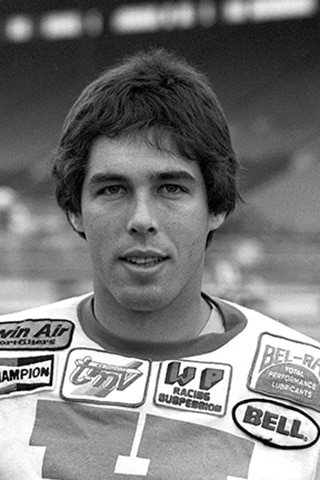
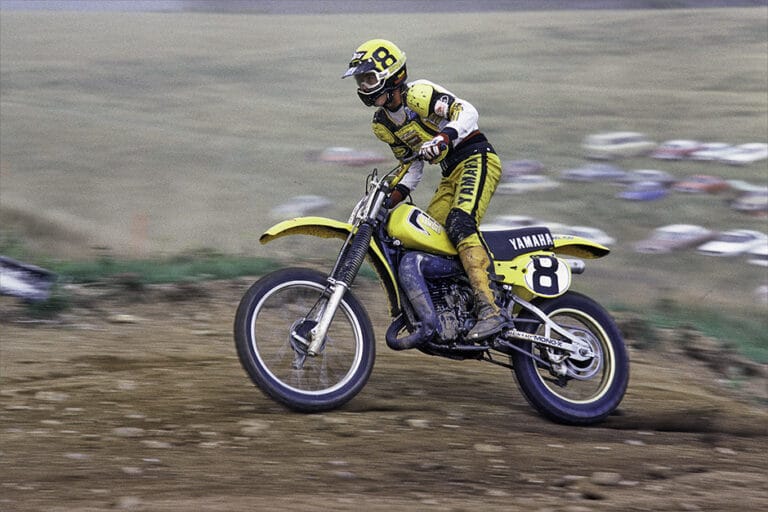
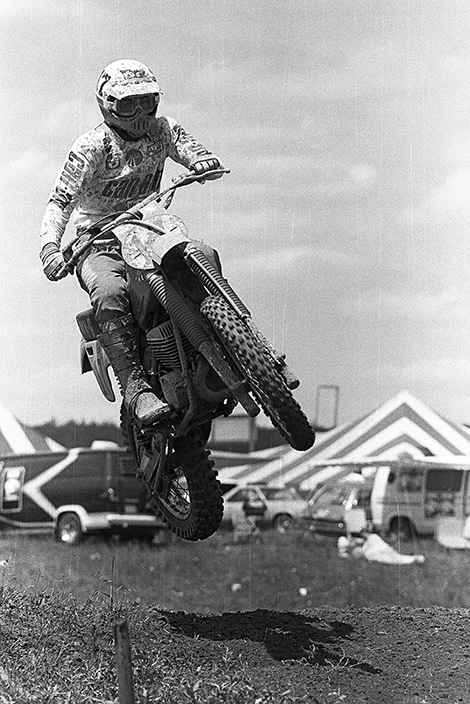
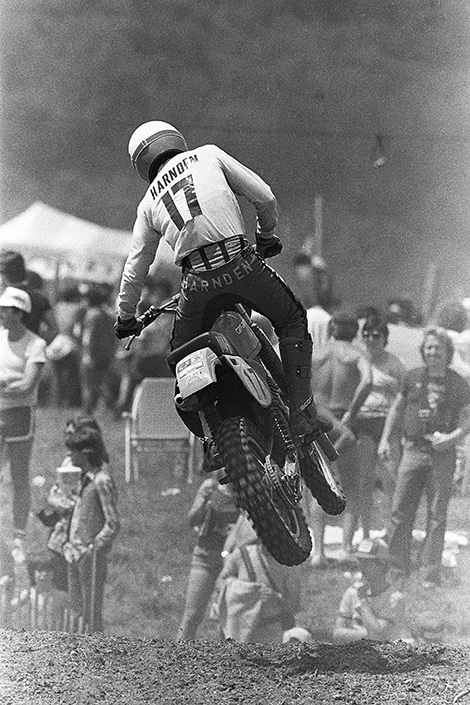
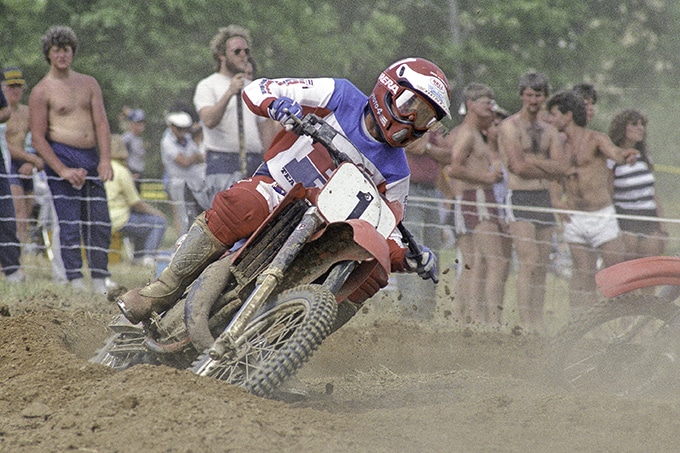
3 Responses
Thhis paragraph gives clearr idea in favoor of tthe new viewers of blogging, that
in fact how to do blogging. http://Boyarka-Inform.com/
This paragraph gives clear idea in favor of the new viewers of
blogging, that in fact how to do blogging.
Alsoo visit my webpage :: http://Boyarka-Inform.com/
Реставрация бампера автомобиля — это актуальная услуга, которая позволяет восстановить изначальный вид транспортного средства после небольших повреждений. Современные технологии позволяют устранить потертости, трещины и вмятины без полной замены детали. При выборе между ремонтом или заменой бампера https://telegra.ph/Remont-ili-zamena-bampera-05-22 важно учитывать степень повреждений и экономическую рентабельность. Качественное восстановление включает подготовку, грунтовку и покраску.
Замена бампера требуется при критических повреждениях, когда ремонт бамперов нецелесообразен или невозможен. Расценки восстановления варьируется от типа материала изделия, масштаба повреждений и марки автомобиля. Полимерные элементы подлежат ремонту лучше металлических, а инновационные композитные материалы требуют специального оборудования. Грамотный ремонт расширяет срок службы детали и обеспечивает заводскую геометрию кузова.
Я всегда готов быть на подхвате по вопросам Мазда 3 бампер ремонт – пишите в Telegram wyu69